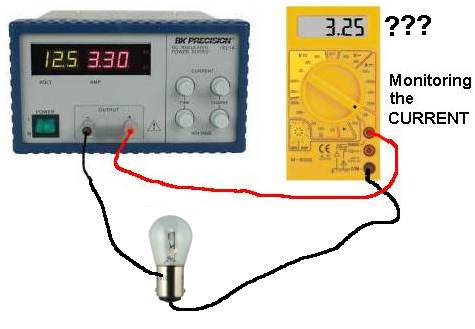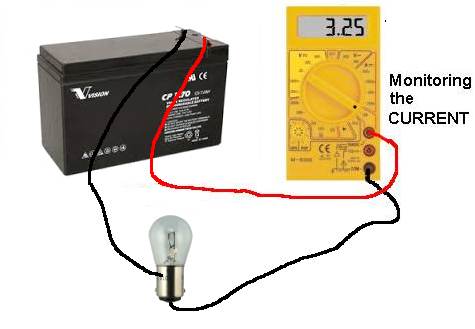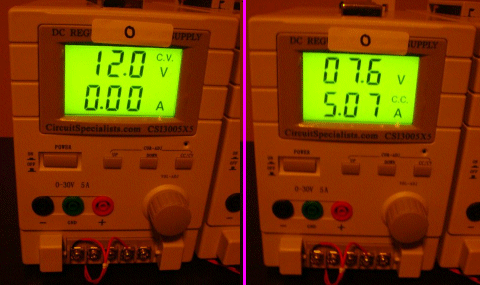THE FUSE
A fuse is simply a thin piece of
wire.
But it can be designed to act quickly or slowly.
A "quick fuse" is called FAST ACTING and a "slow fuse" is called
a DELAY FUSE.
A FAST ACTING fuse is also called a NORMAL FUSE.
It takes a lot of skill and knowledge to fit the correct fuse and also
replace a fuse with the correct type.
A fuse doesn't really protect anything.
If a circuit gets overloaded, the fuse generally remains intact until
one or more of the components "blows up" and the higher current heats
the wire in the fuse and it melts.
The most common fuse in electronic work is 1 amp, 2 amp and 3 amp.
The rating "1 amp" is called the RATED CURRENT and is the current the
fuse will handle for many years.
The term "FUSING CURRENT" is the value of current that will cause the
fuse to melt. The time will depend on the construction of the fuse.
A normal fuse will allow about twice the rated current to flow and
during this time the fuse can actually start to glow. This will oxidise
the tin coating and the wire will gradually start to deteriorate. This
will allow the fuse to fail at any time.
A DELAY FUSE is made with a piece of wire from one end and another from
the other end and the two are soldered in the middle with a dot of
solder.
If the two wires start to get hot, the solder melts and the wires
separate.
This can happen at currents as low as 1.5 amp.
With fuses below 500mA, the wire is very thin and the current can
gradually damage the coating and eventually it will fall apart for no
reason.
As you can see, the fuse does not fail until at least 50% overload
occurs and most transformers are not designed for this amount of
overload.
Thus the transformer will fail and that's why some products have a 500mA
fuse on the primary.
By the time the fuse fails, the transformer is "cooked."
The alternative to a fuse is a POLY SWITCH. This is covered in the next
section.
Alternatively, a low value resistor can be used.
Sometimes a resistor is a good solution because, as the current
increases to say twice the operating current, the power (heat)
dissipated by the resistor will increase 4 TIMES.
This will damage any normal resistor.
PICO FUSES
PICO Industries developed a number of very small fuses with ratings from
100mA to 5 amp in a thin glass tube and having wires out each end so the
fuse can be soldered to the PC board.
These small fuse became to be know as PICO FUSES and they are simply a
"wire-in" fuse, contained in a very small glass tube.
Sometimes they are dipped and sealed.
Some of these fuses are hard to identify and difficult to determine the
current rating.
You will need a multimeter to detect if the wire is intact. If is
damaged, you will need to pull it apart and use a digital caliper to
measure the diameter of the wire.
You will then need some new ones to pull apart and measure the diameter
of the wire.
If there is a little spring inside the glass tube or a dob of solder,
the fuse is a "SLOW-BLO" (DELAY) and it must be replaced with the same
type.
A 1-amp "slow-blo" fuse will accept up to 3 amp for short periods of
time and not get weakened because the wire is thicker than a normal 1
amp fuse. It works on the principle of the wire getting hot when 1.5
amps flows and the low-temperature solder melting.
When a power supply is turned ON, the electrolytics are uncharged and a
very high current flow initially to charge them.
Both types of fuses will heat up during this time and you will be able
to see the wire "sag" and then tighten again.
This process will gradually damage a normal fuse, whereas a delay fuse
will not be affected.
There are hundreds of different types and styles of fuses for
automotive, household, appliance and industrial protection.
If a fuse keeps blowing for no apparent reason, the first thing to do is
refit the fuse up to 5 times and then use a delay fuse.
You cannot go to the next value as it will be 30% to 50% higher rating
and the fuse you are already using is allowing up to 50% higher current
to flow, before it fails.
If you fit a "stronger" fuse, the power supply may not be able to
deliver sufficient current to activate the fuse and the equipment will
"sit and burn" if a short-circuit develops.
Fuses in amplifiers are the hardest to replace because the amplifier
takes a varying amount of current, according to the loudness of the
music.
These fuses are generally "slow-blo" (delay) and the output
wattage can be up to 10 times more than the average current when "loud
thumping" is produced.
That's why you need to go by the manufacturers recommendation, as they
have tested to equipment and come up with a value that does not
prematurely fail.
This just a discussion to make you aware of the two different types of
fuse and the approx current they are capable of handling.
AC FUSES
The current rating marked
on the side of a fuse is DC CURRENT in AMPS.
There is no such thing as an "AC Fuse."
All fuses can be used in AC circuits.
In an AC circuit, the current will be say 1 amp for part of the
cycle and less than 1-amp for the remainder of the cycle.
The heating effect on the wire inside the fuse will be exactly the same
as a DC current of 1 amp.
This applies to all household fuses. A 10 amp fuse will allow 10 amps to
flow and not be damaged or deteriorate. But what really happens is 14
amps will flow during the peak of the wave and less than 10 amps for the
remainder of the cycle. The 14 amps is not present for long enough to
overload the fuse.
Household fuses consisting of a length of wire are called "normal
fuses."
A circuit breaker is called a FAST ACTING device and can be as fast a
ONE CYCLE.
It detects excess current by producing magnetic flux from two turns of
wire made from the conductor carrying the current. This magnetic flux is
detected by a Hall device and a relay is activated to open the circuit.
This is a totally different principle to a "hot wire" fuse.
DIFFERENT TYPES OF FUSES
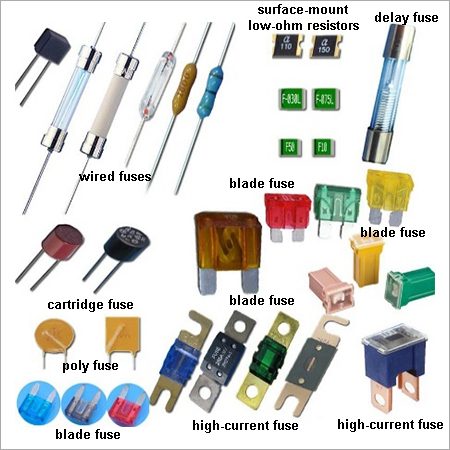
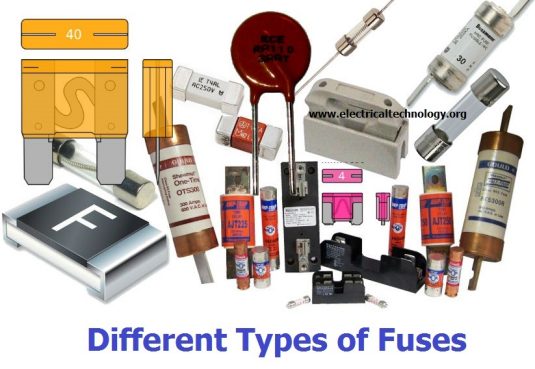
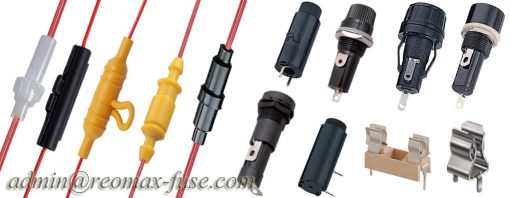
These images show 5 in-line fuse holders,
then
panel-mount fuse holders and fuse clips at the bottom
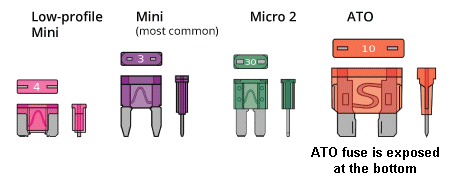
These images show blade fuses
Low-ohm surface-mount resistors can be used
as a fuse because the current flowing through the resistor will create
heat. The amount of heat is a product (multiplication) of the current
flowing and the value of resistance. Basically you can say the wattage
dissipated is four times greater when the current doubles. That's why it
heats up and fails.
But there is a voltage drop across the resistor AT ALL TIMES and you
must take this voltage drop into account when designing the project.
There is no voltage drop across a "normal" (wire) fuse. |
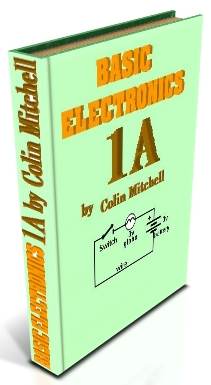
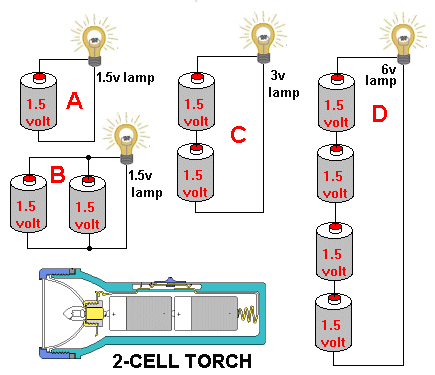
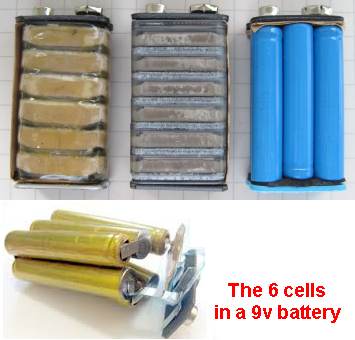
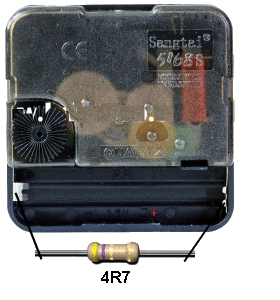 You
can test rechargeable cells to determine if they still have full
capacity by connecting them to the clock mechanism on the left.
The 4R7 resistor will draw a considerable current and the clock
will stop when the battery reaches 0.7v. Start the time a 12:00
and the hands will show the number of hours of operation.
You
can test rechargeable cells to determine if they still have full
capacity by connecting them to the clock mechanism on the left.
The 4R7 resistor will draw a considerable current and the clock
will stop when the battery reaches 0.7v. Start the time a 12:00
and the hands will show the number of hours of operation. 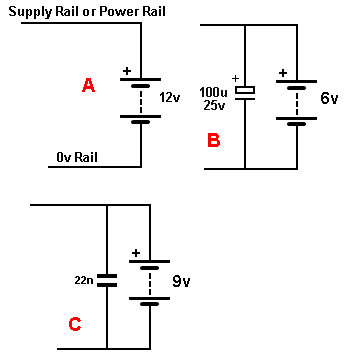
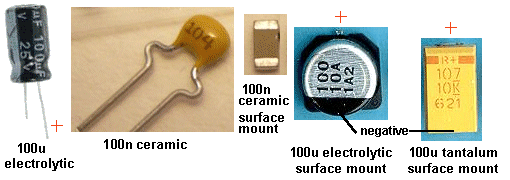
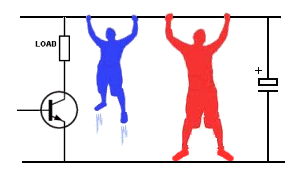
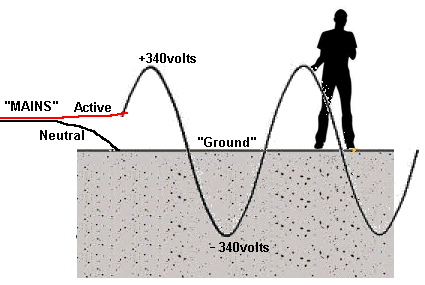
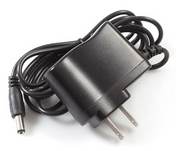
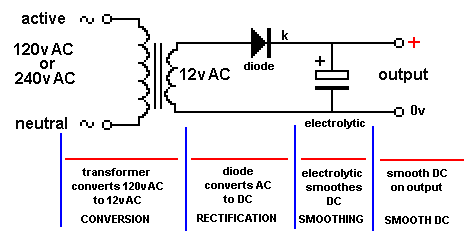
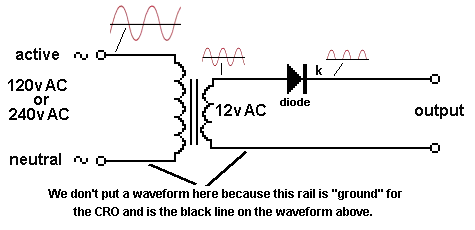
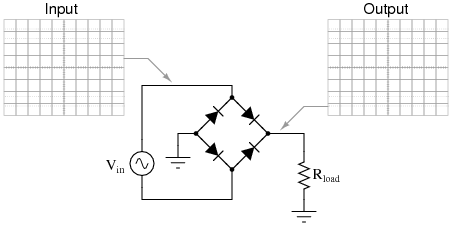
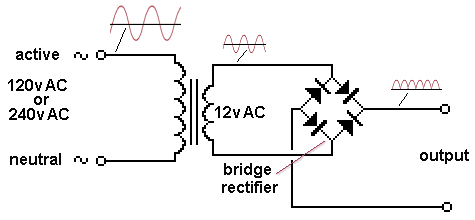
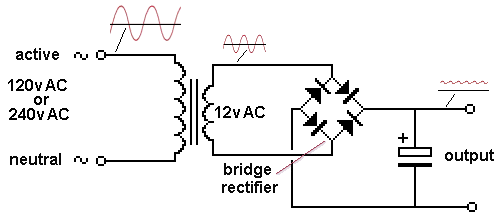
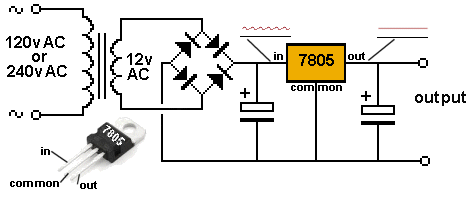
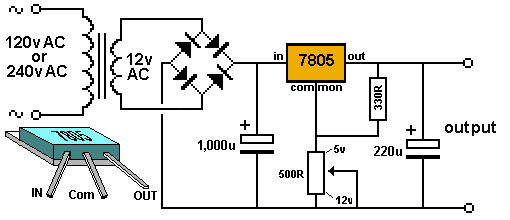
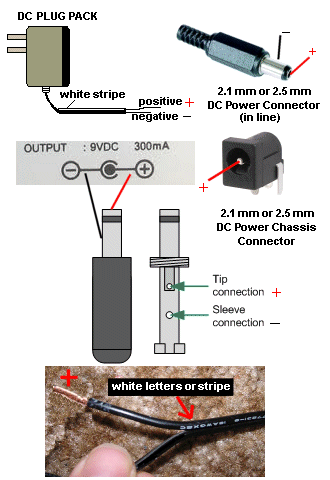
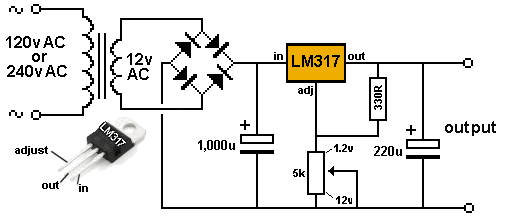
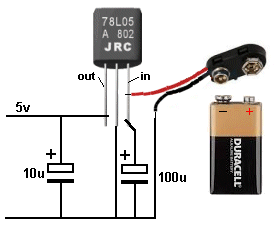
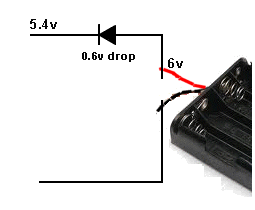

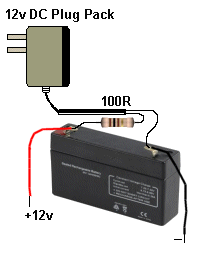

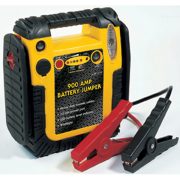
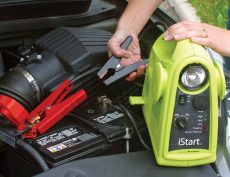
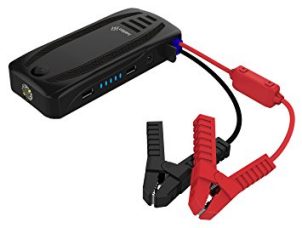
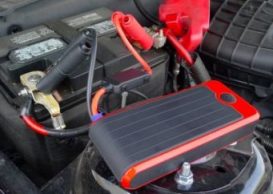
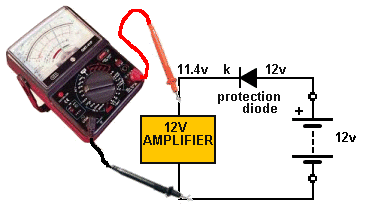
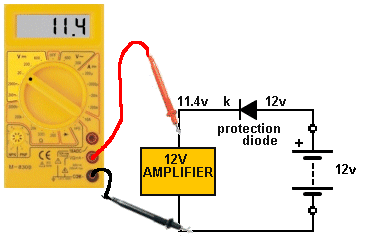
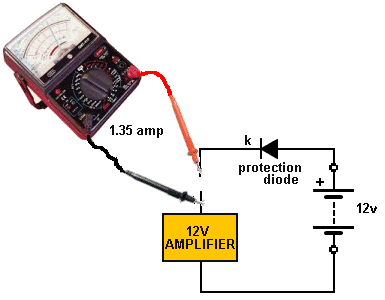
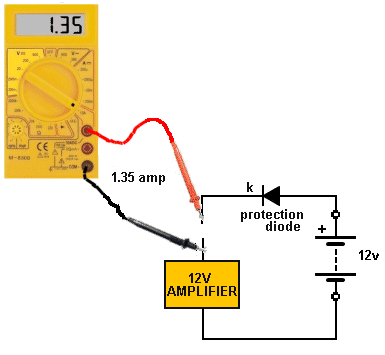
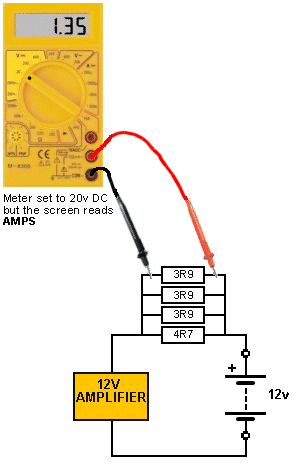

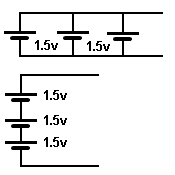
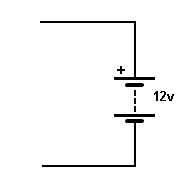
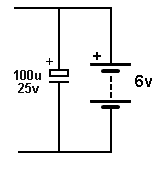
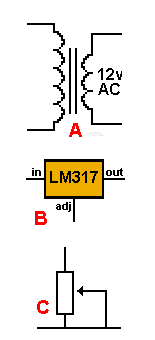

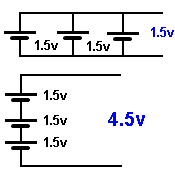
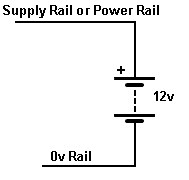
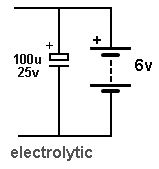
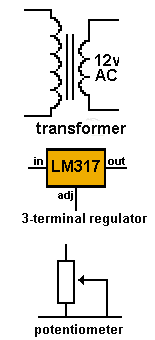


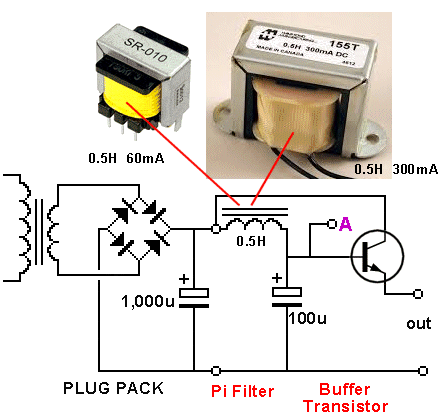
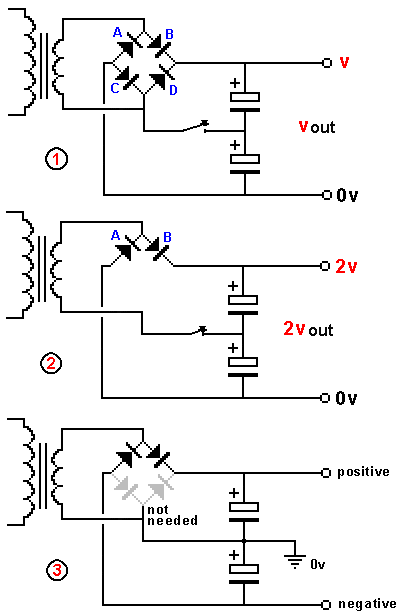
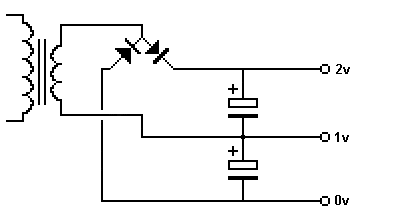
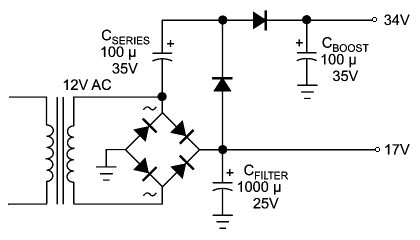
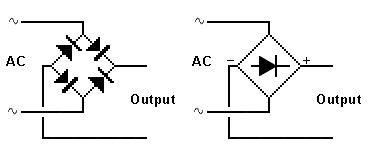

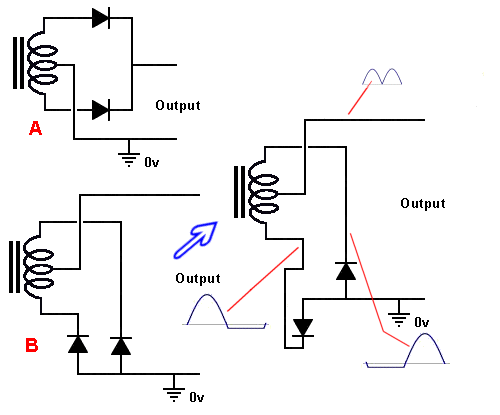
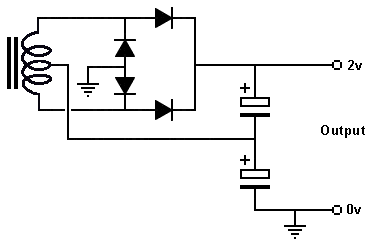
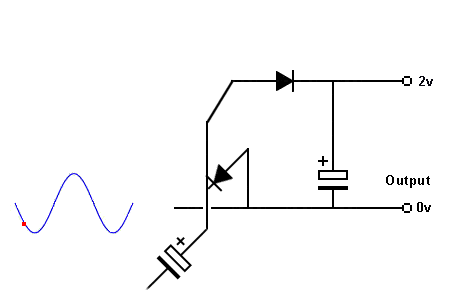
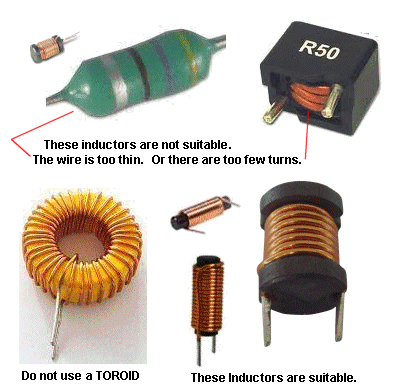
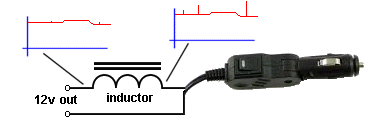


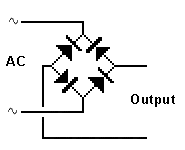
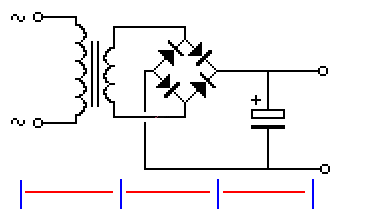
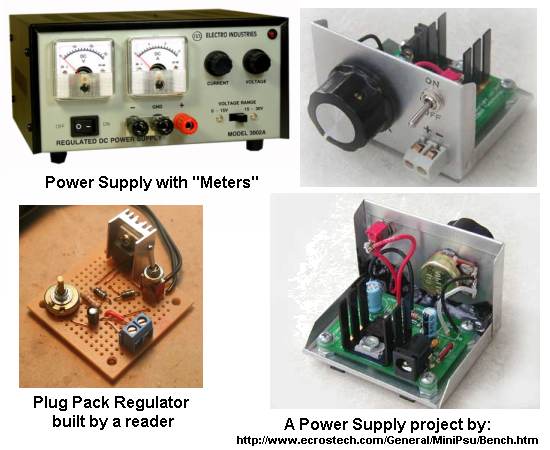
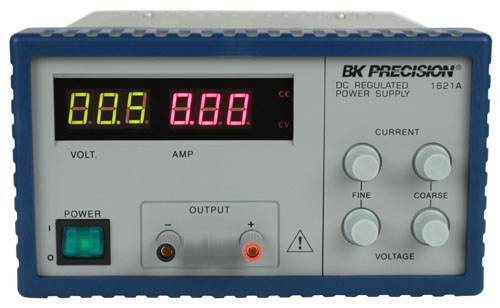
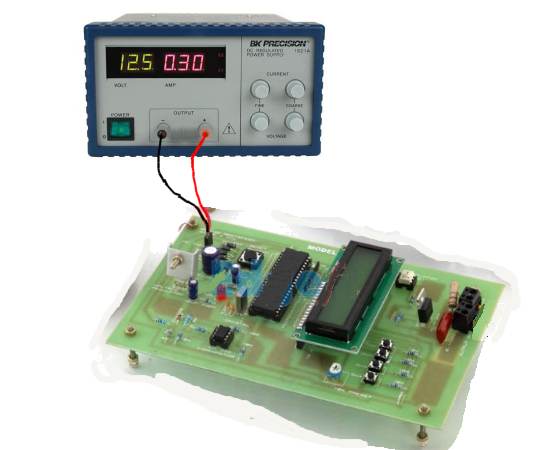
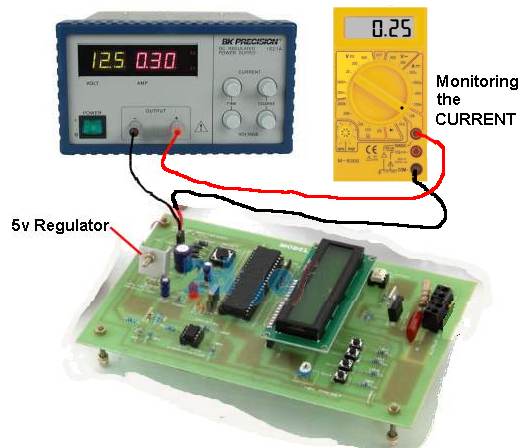




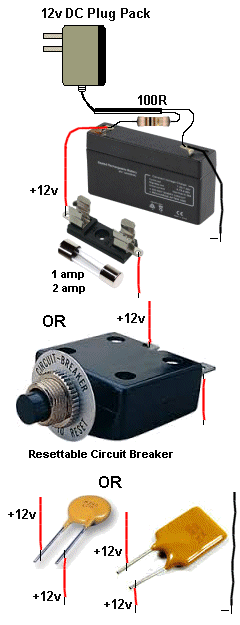
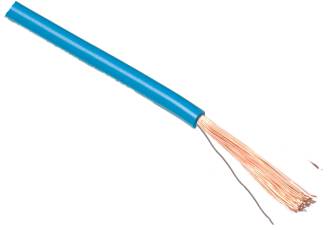 You can make your own fuse by taking one strand of wire from multi-strand
hook-up flex and use it to touch the positive terminal of the battery.
If it "goes up in smoke," the circuit is taking too much current.
You can make your own fuse by taking one strand of wire from multi-strand
hook-up flex and use it to touch the positive terminal of the battery.
If it "goes up in smoke," the circuit is taking too much current.
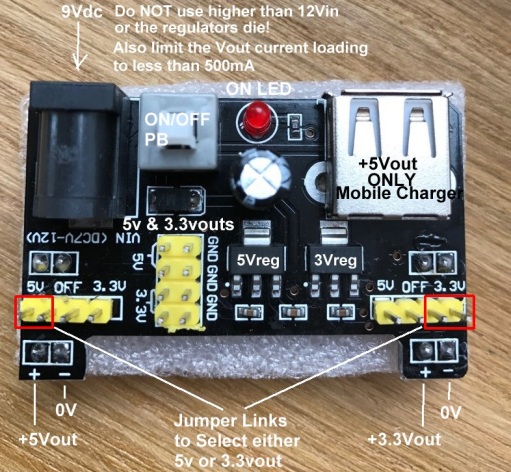
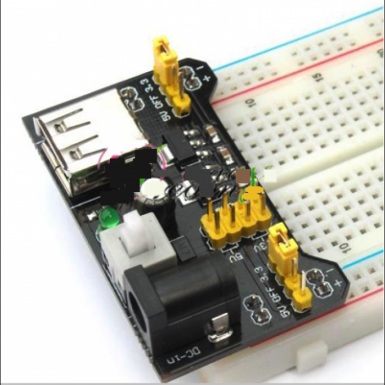
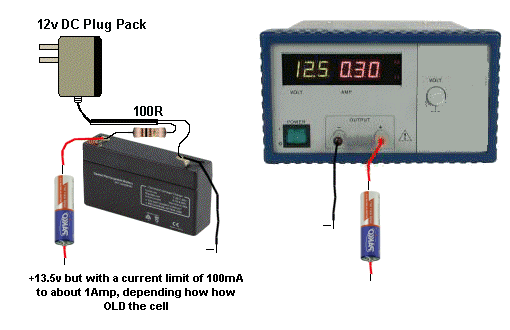 Here's a cheap way to protect your
project from damage when testing it for the first time.
Here's a cheap way to protect your
project from damage when testing it for the first time. 